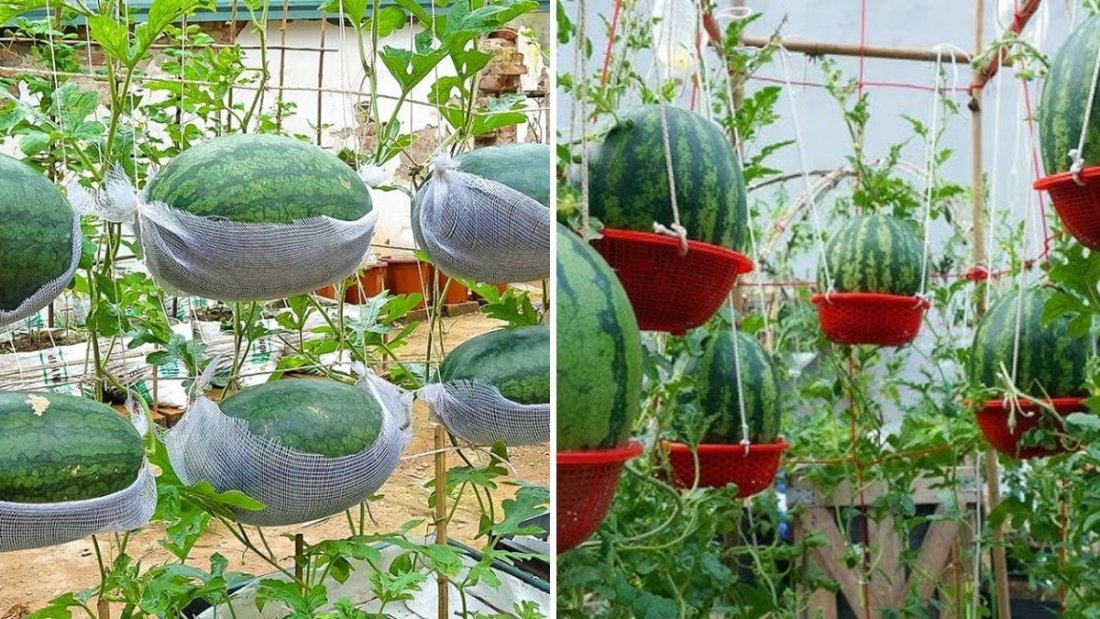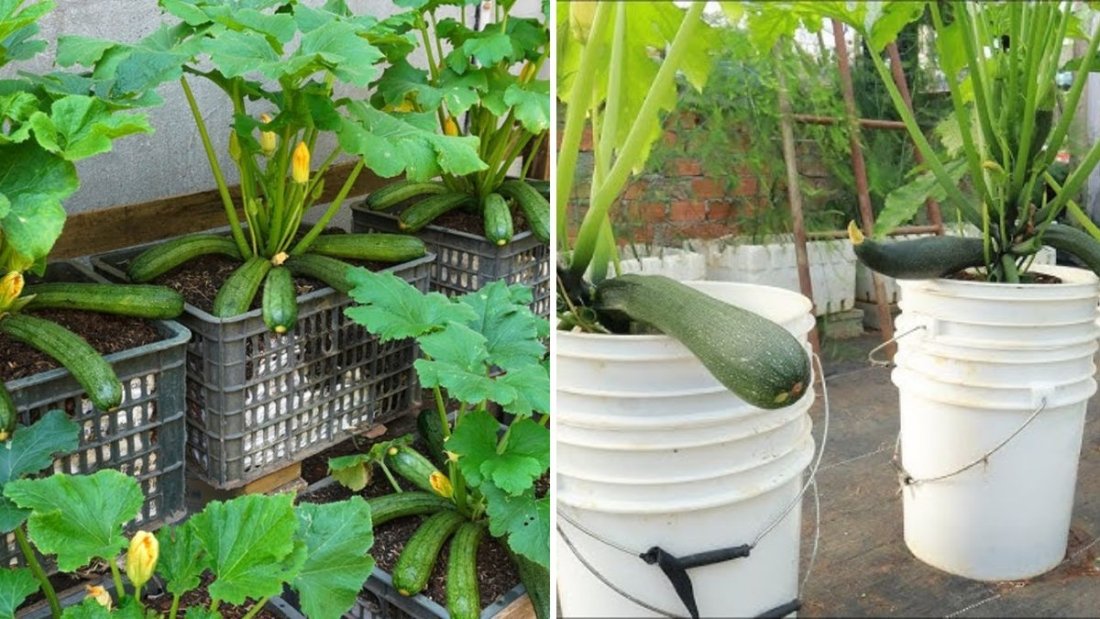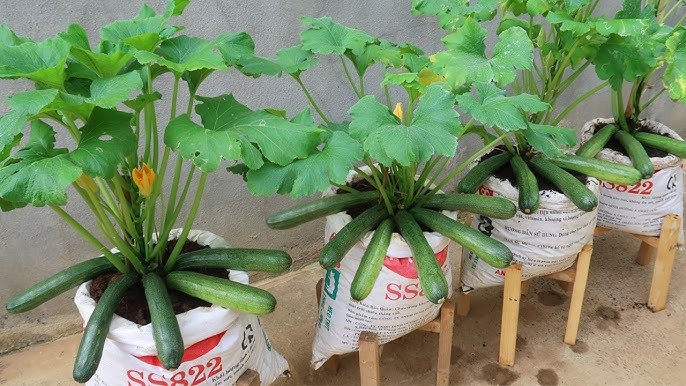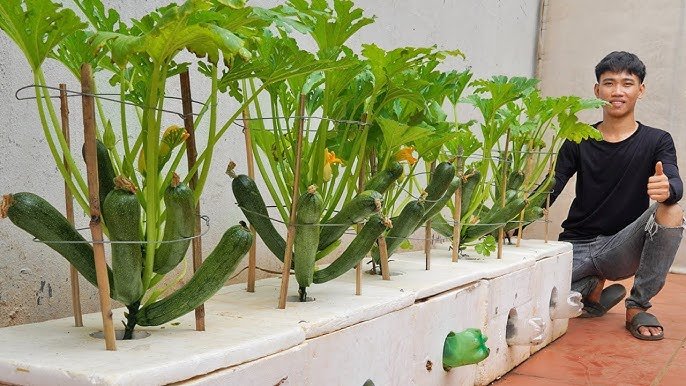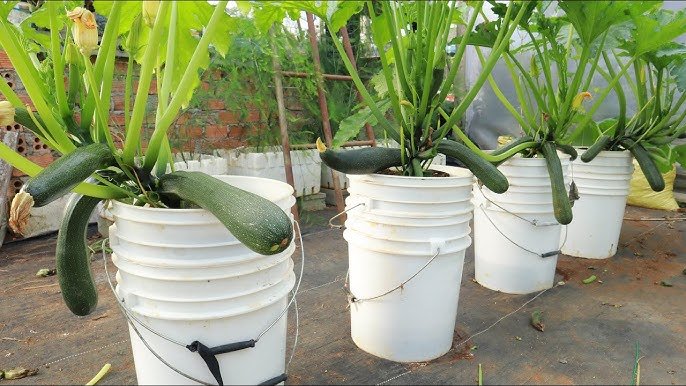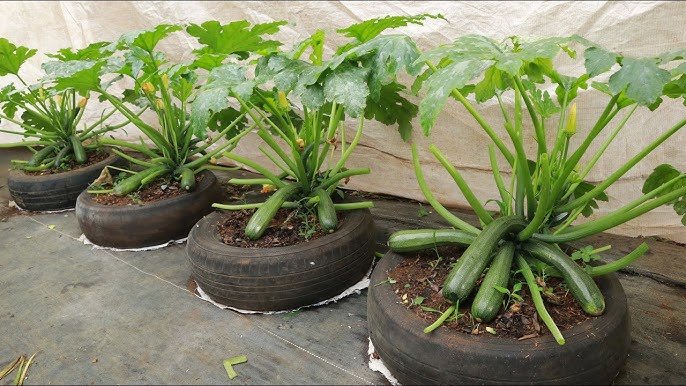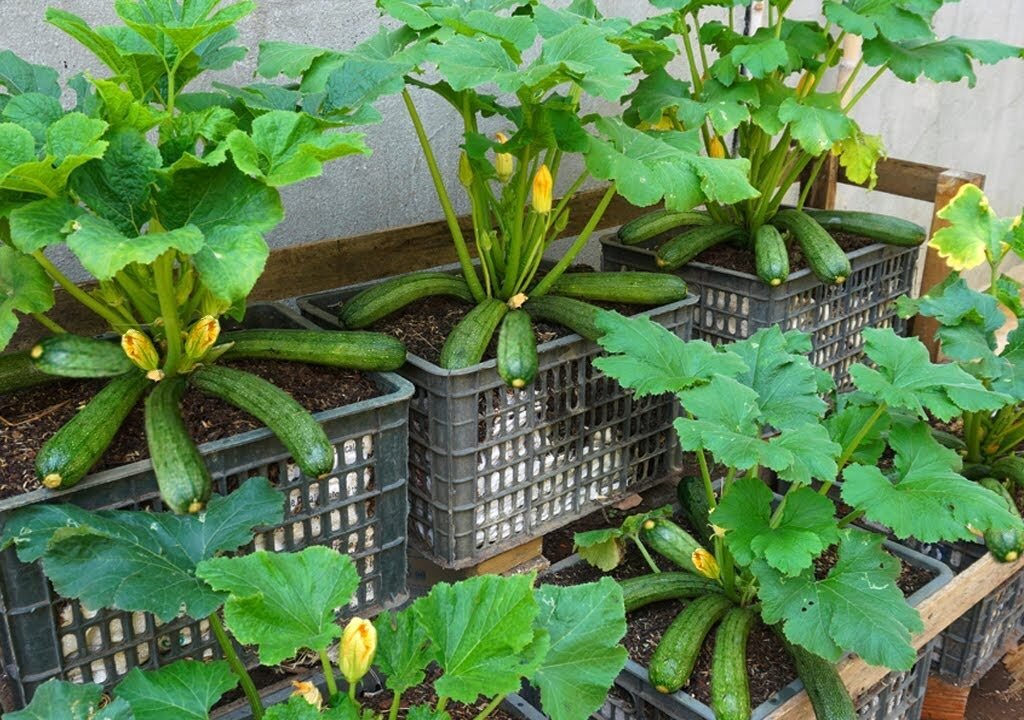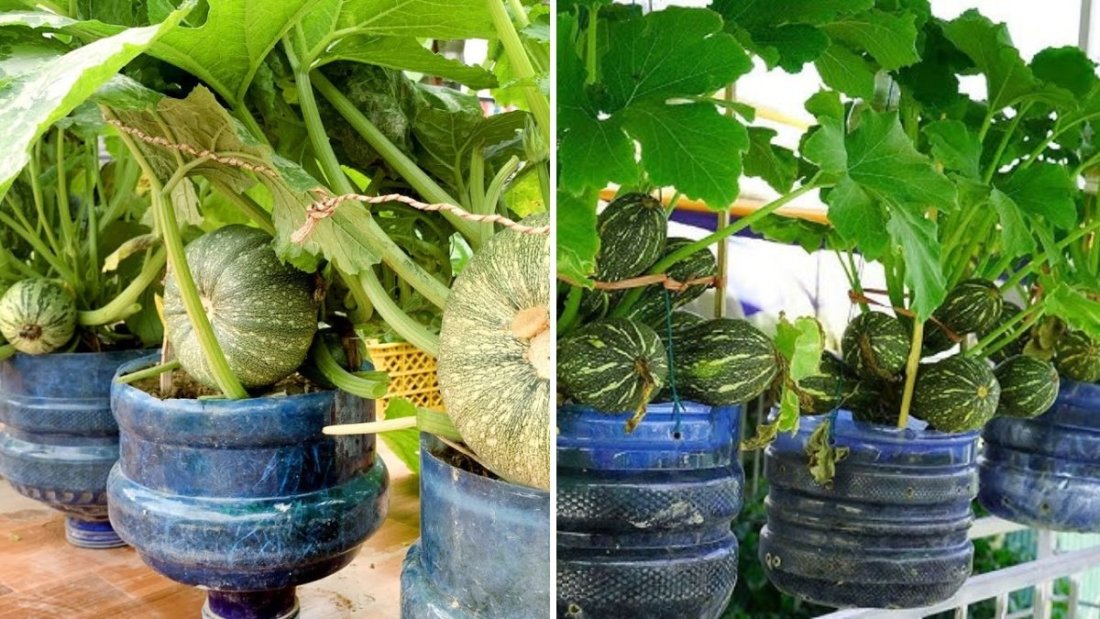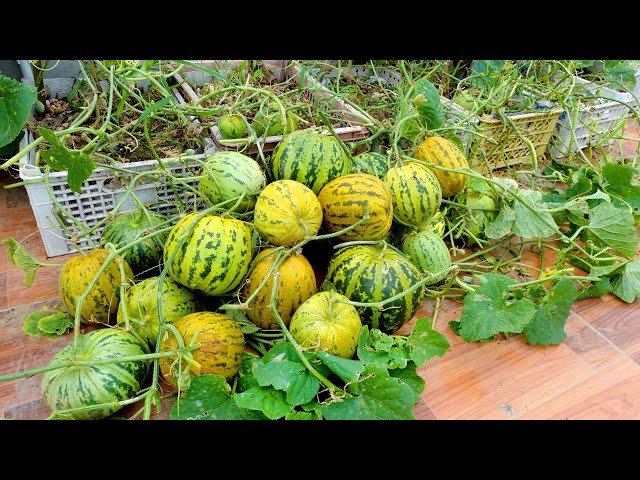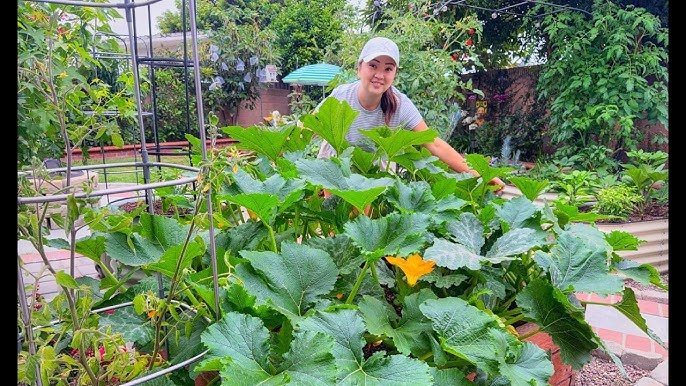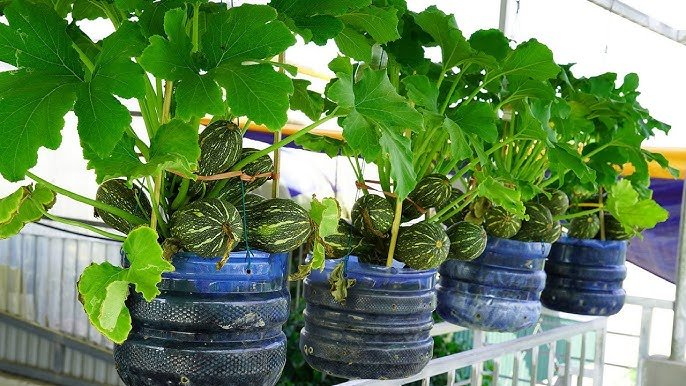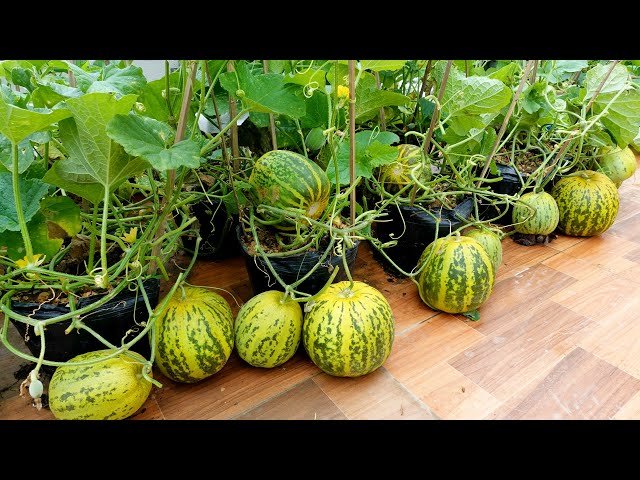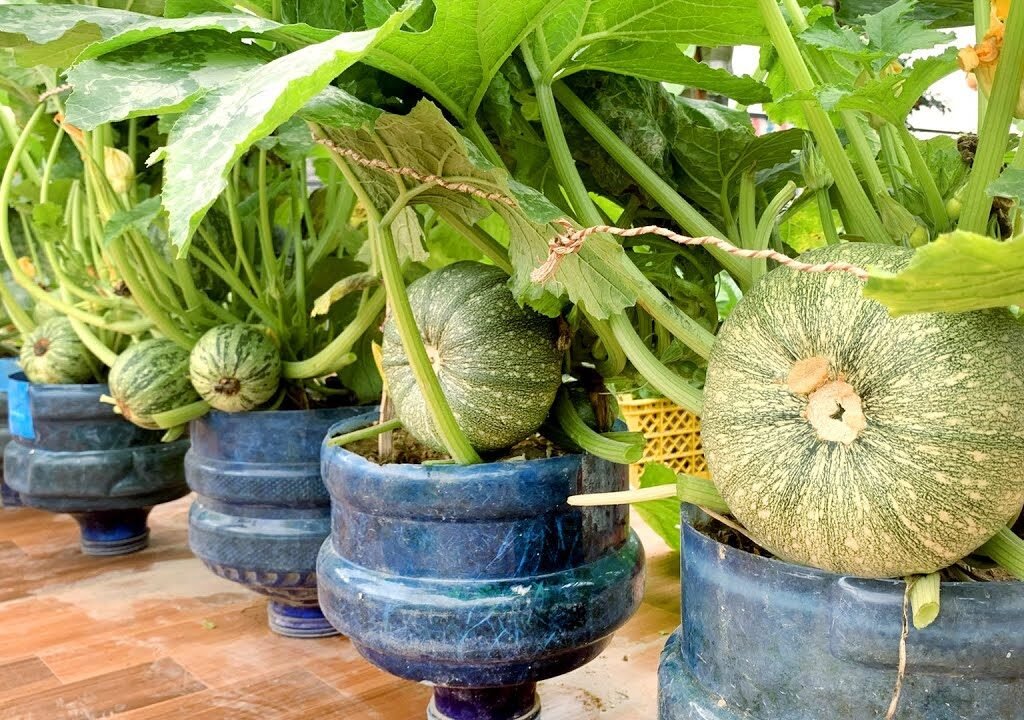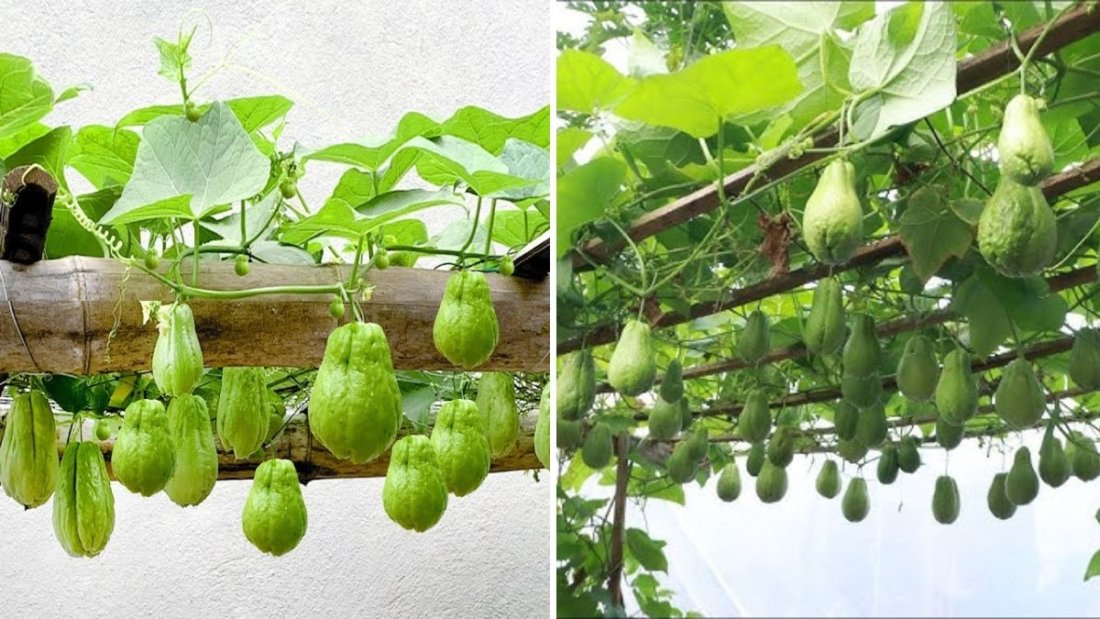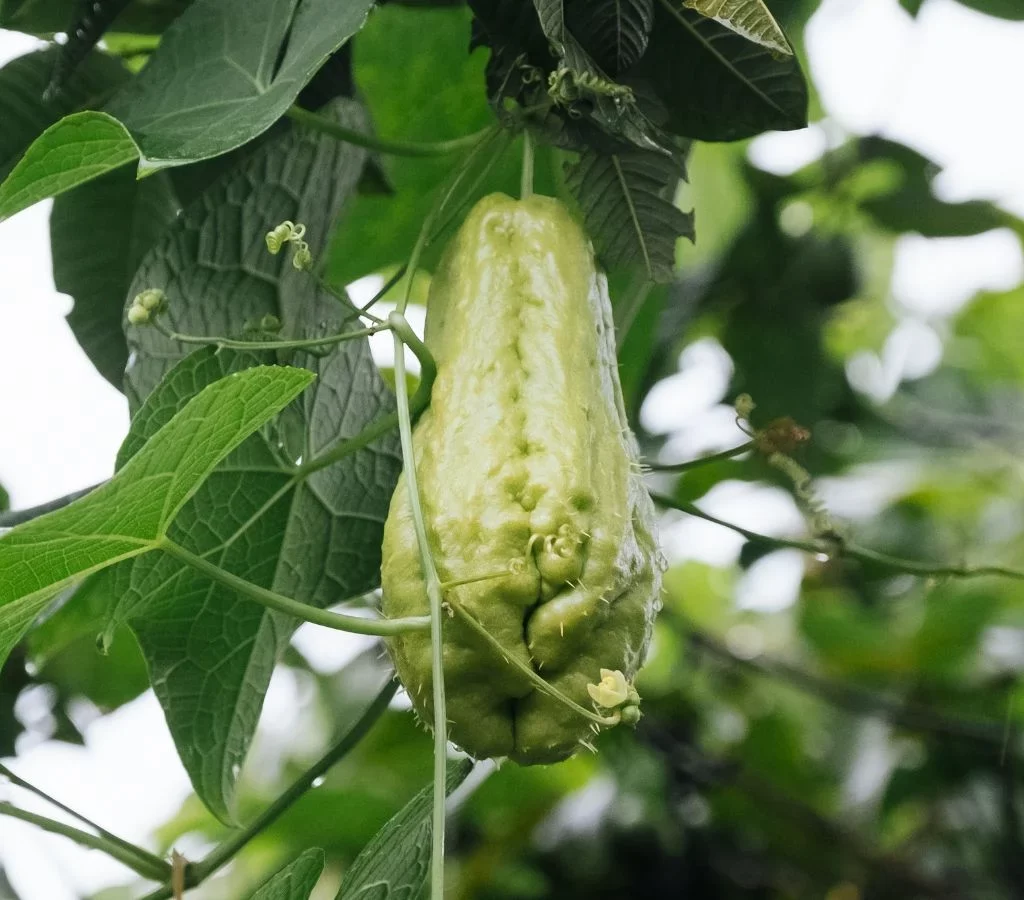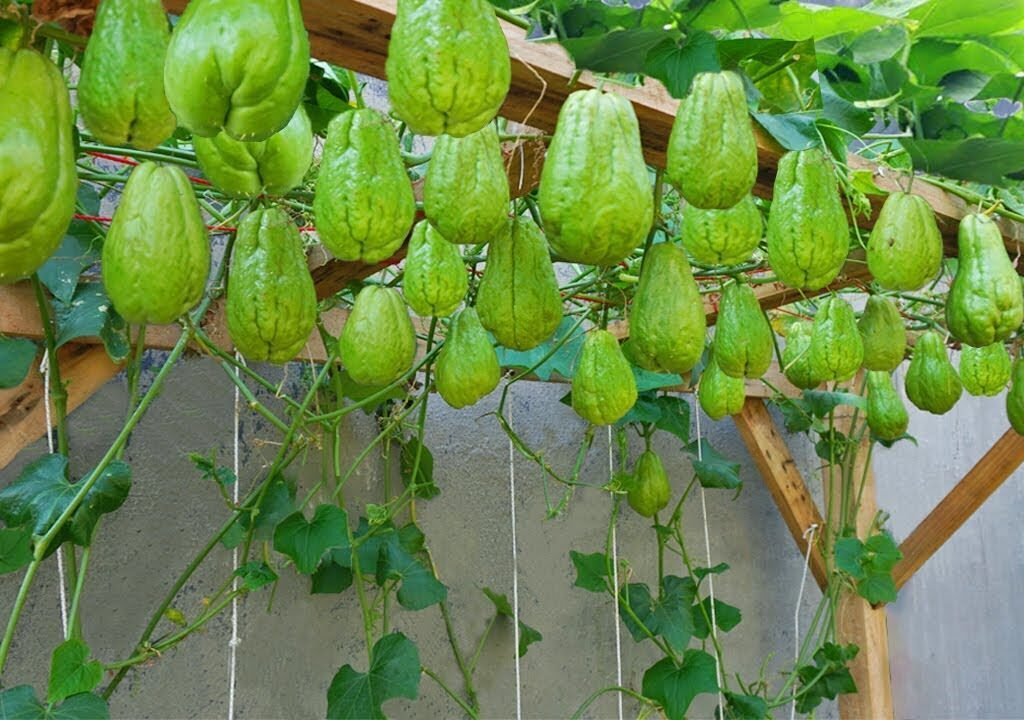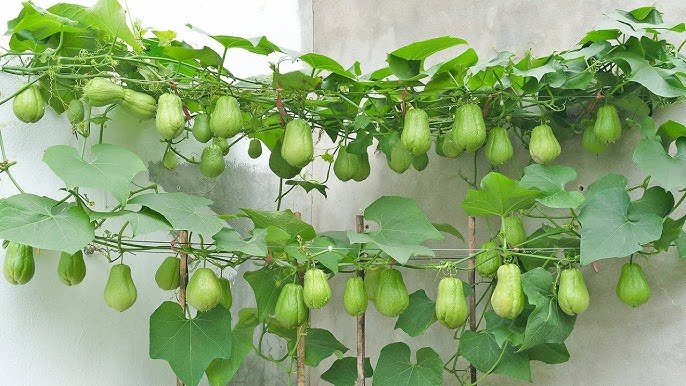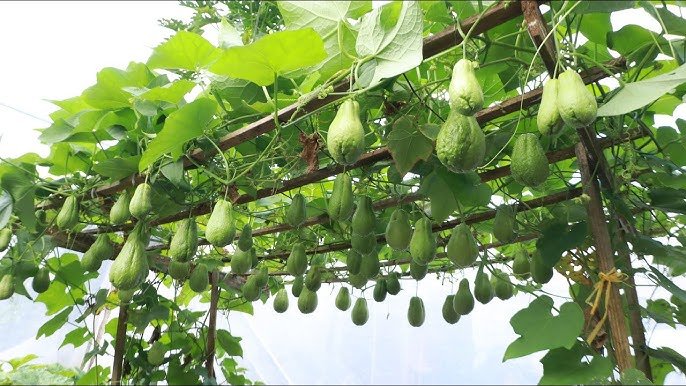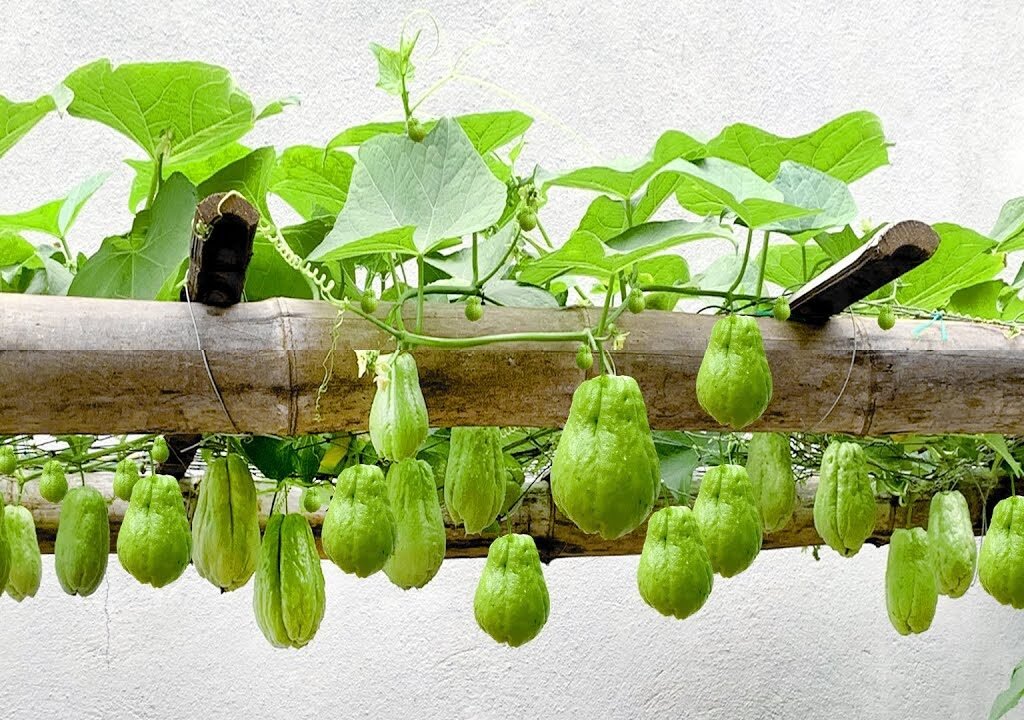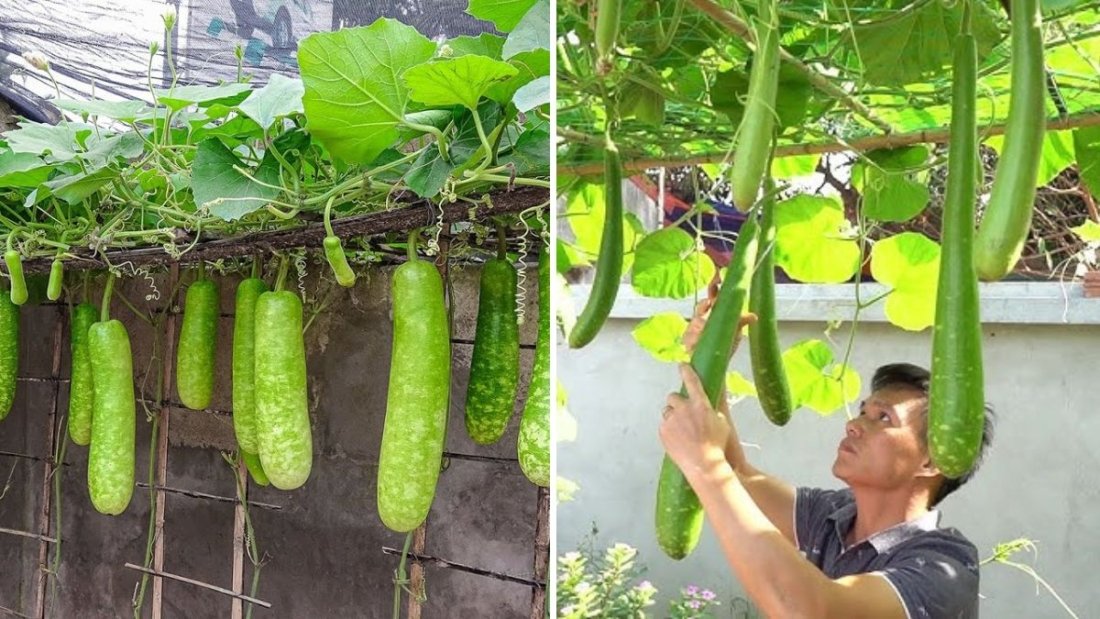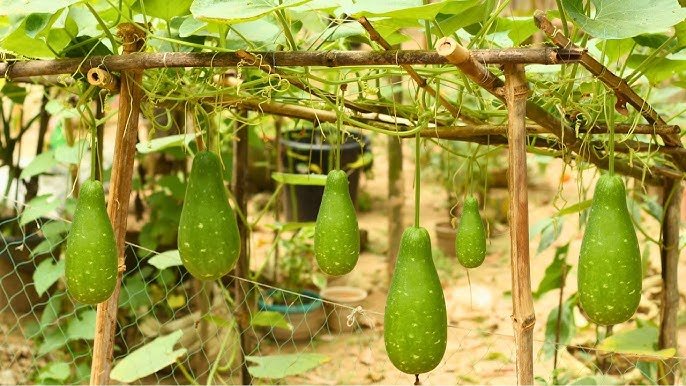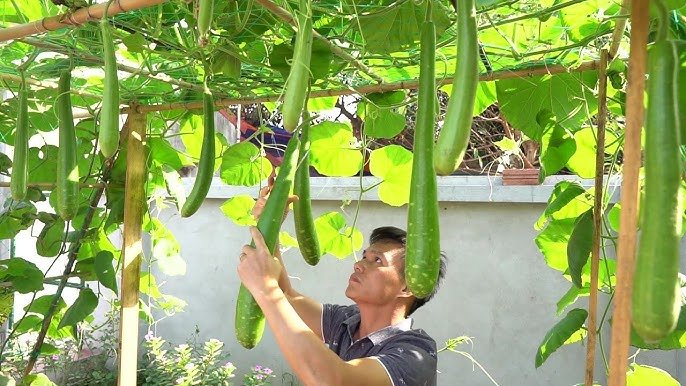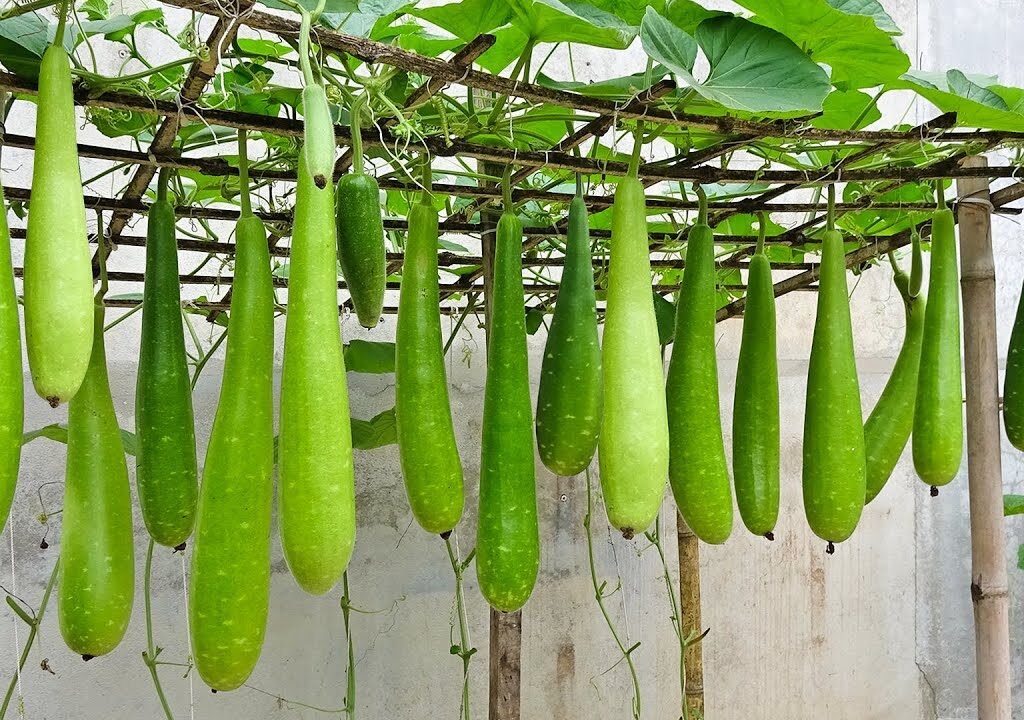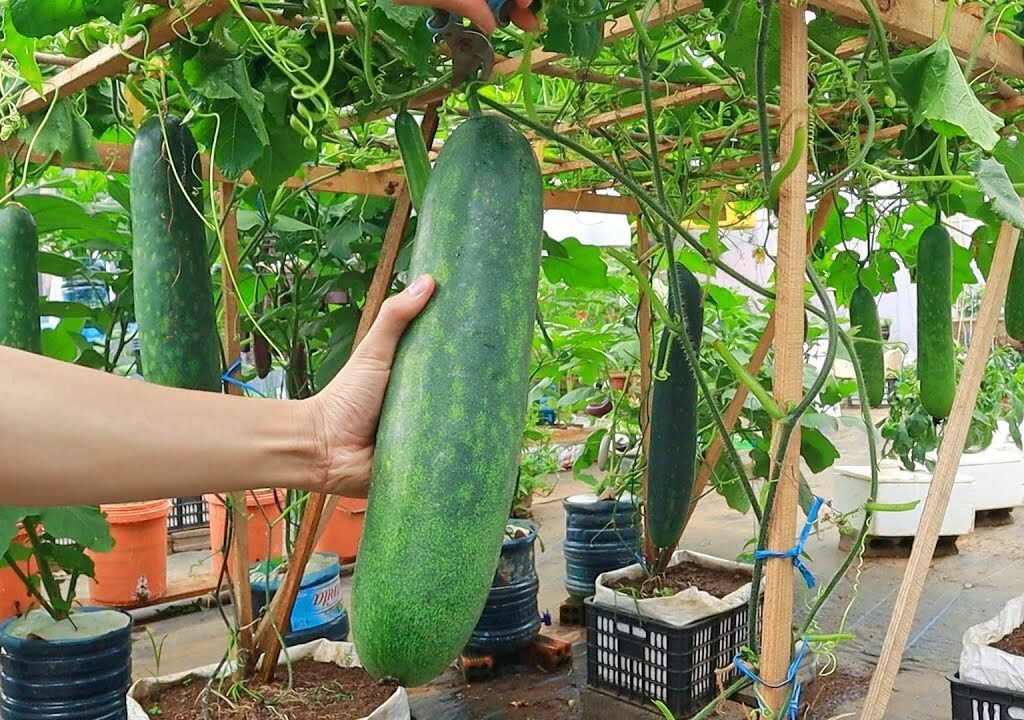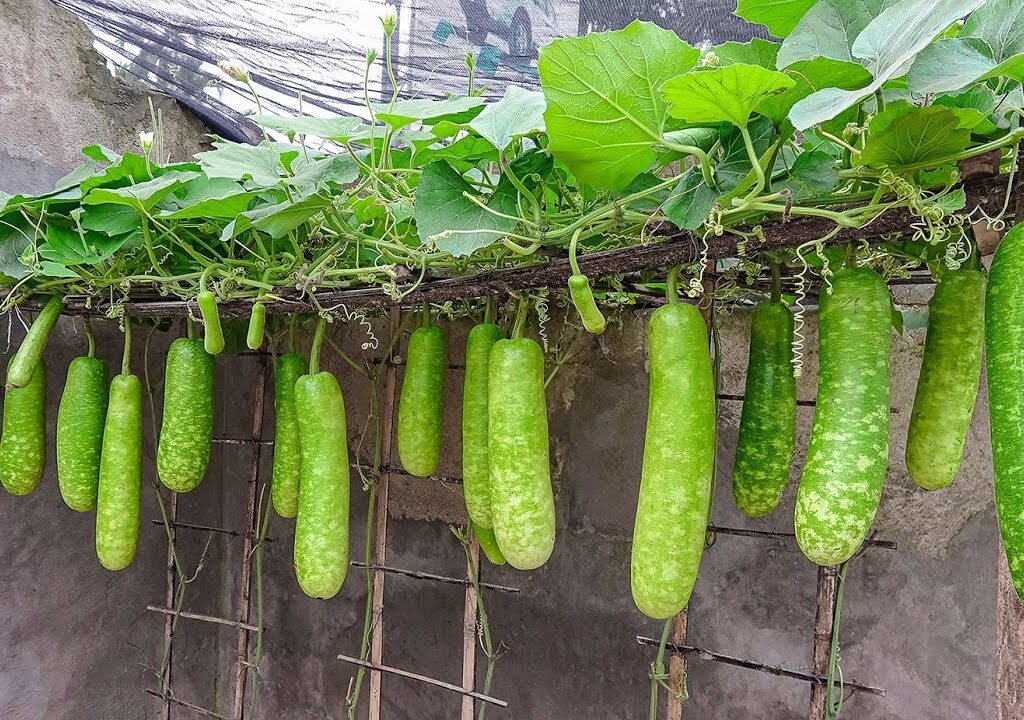Watermelons are a summer favorite, loved for their juicy sweetness and refreshing taste. Traditionally, growing watermelons requires ample garden space because the vines spread widely across the ground. But what if you don’t have a large yard?
Thanks to the innovative hanging hammock method, even beginners with small terraces, balconies, or urban gardens can grow watermelons successfully. This method not only saves space but also produces large, sweet fruits without the worry of the fruit touching the ground or getting damaged.
In this guide, inspired by the YouTube video “Growing watermelon hanging hammock for beginners, Fruit is big and sweet”, we’ll walk you step by step on how to grow watermelons in hammocks, from choosing seeds to harvesting a bountiful, juicy crop.
Why Use a Hanging Hammock for Watermelons?
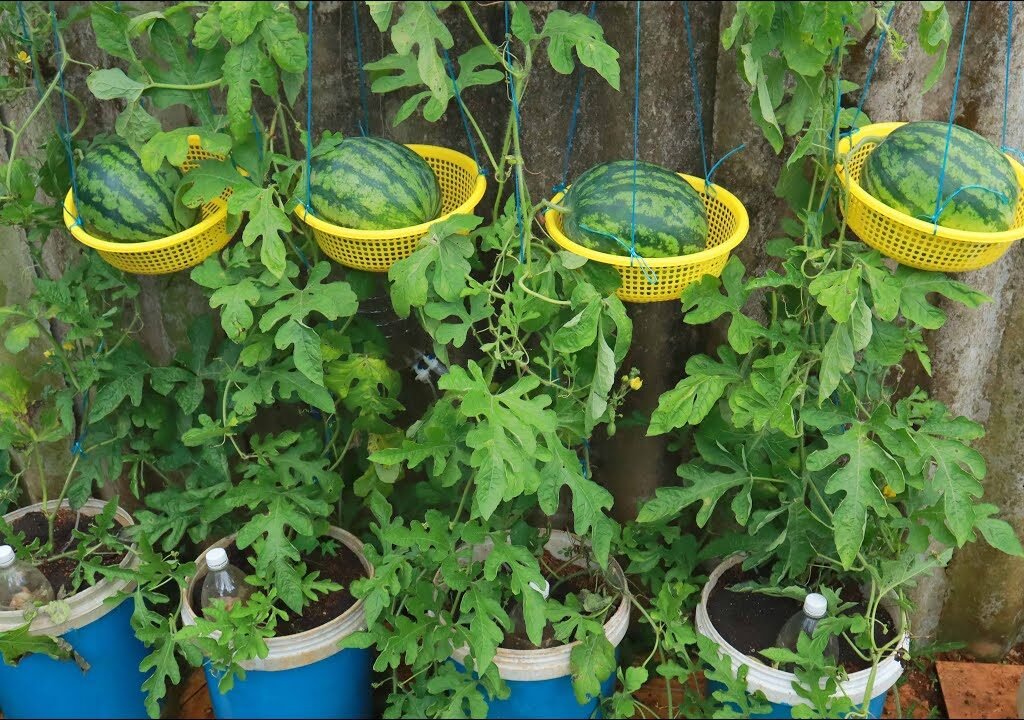
Growing watermelons in hammocks is a game-changer for urban gardening. Here’s why:
- Space-Saving: Vines climb upward, freeing ground space.
- Prevents Fruit Damage: Hammocks keep fruits off the soil, protecting them from pests, rotting, and uneven ripening.
- Better Airflow: Elevating fruits reduces humidity around them, preventing fungal diseases.
- Improved Sun Exposure: Hanging fruits receive more sunlight, improving sweetness and size.
- Beginner-Friendly: Less weeding and easier management compared to traditional ground planting.
Step 1: Choose the Right Watermelon Variety
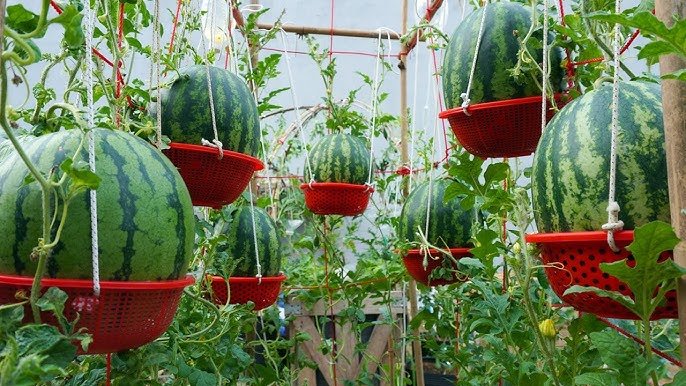
Not all watermelon varieties are suitable for hammock growing. Look for compact, vine-friendly, or “bush-type” watermelons that can be supported with a sling or net.
Recommended Varieties for Beginners:
- Sugar Baby: Small to medium fruits, easy to manage in containers or hammocks.
- Crimson Sweet: Popular variety, sweet taste, medium-sized fruits.
- Bush Sugar Baby: Ideal for container or hanging growth.
- Personal or Mini Watermelons: Perfect for balcony or terrace gardens.
Selecting the right variety ensures your watermelon plant grows well and produces large, juicy fruits.
Step 2: Prepare the Growing Container or Garden Bed
Even if using hammocks, watermelons need a strong base for root development.
Container Option:
- Use a large pot or grow bag (at least 18–24 inches deep and wide).
- Ensure proper drainage holes to prevent waterlogging.
Soil Preparation:
- Mix 40% garden soil, 40% compost, and 20% sand or cocopeat for aeration.
- Optionally, add bone meal or organic fertilizer for strong root growth.
If planting directly in a garden bed, choose a sunny spot with well-draining soil and plenty of space for the vine to climb toward the hammock.
Step 3: Start with Healthy Seeds or Seedlings
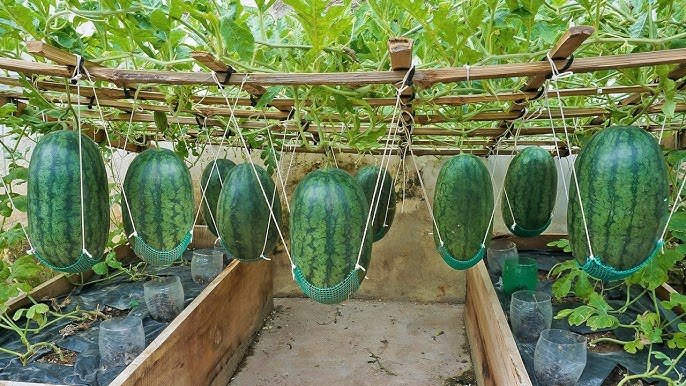
Watermelons can be grown from seeds or small seedlings.
Seed Germination:
- Soak seeds in warm water for 8–10 hours to soften the shell.
- Plant seeds in small cups or trays about 1 inch deep in a seed-starting mix.
- Keep the soil moist and warm; seeds will sprout in 5–7 days.
Once seedlings have 3–4 true leaves, they are ready to transplant into the container or garden bed.
Step 4: Set Up the Hammock for Watermelon Fruits
The hammock supports the weight of growing fruits, preventing the vine from breaking. Here’s how to set it up:
- Use strong fabric, netting, or jute sacks to make a sling.
- Attach the sling securely to a trellis, balcony railing, or wooden frame.
- Leave room for the fruit to expand as it grows.
- Ensure the support can hold 5–10 kg or more, depending on watermelon size.
You can make a DIY hammock with old t-shirts, net bags, or repurposed cloth for an affordable and eco-friendly solution.
Step 5: Transplant Seedlings into Containers or Soil
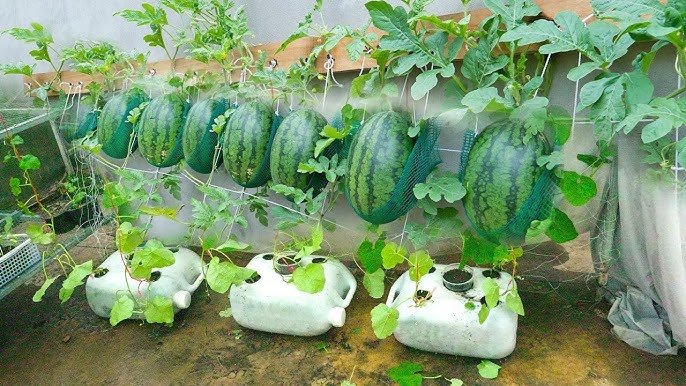
Once the seedlings are strong:
- Dig a hole in the container or soil slightly larger than the seedling’s root ball.
- Place the seedling gently and cover the roots with soil.
- Water lightly to settle the soil.
- Train the vine to grow toward the trellis or frame where the hammock will hang.
This ensures the vine grows upward and prepares for the fruits to be placed in the hammock when they start forming.
Step 6: Sunlight and Watering Needs
Watermelons thrive in full sun and consistent moisture.
Sunlight:
- Ensure 6–8 hours of direct sunlight daily.
- Sunlight is crucial for fruit sweetness and overall plant health.
Watering:
- Water deeply 2–3 times a week, more in hot weather.
- Avoid wetting leaves to prevent fungal infections.
- Use mulch around the roots to retain soil moisture and reduce weeds.
Proper watering combined with sunlight is key to producing large, sweet fruits.
Step 7: Fertilizing for Maximum Fruit Size
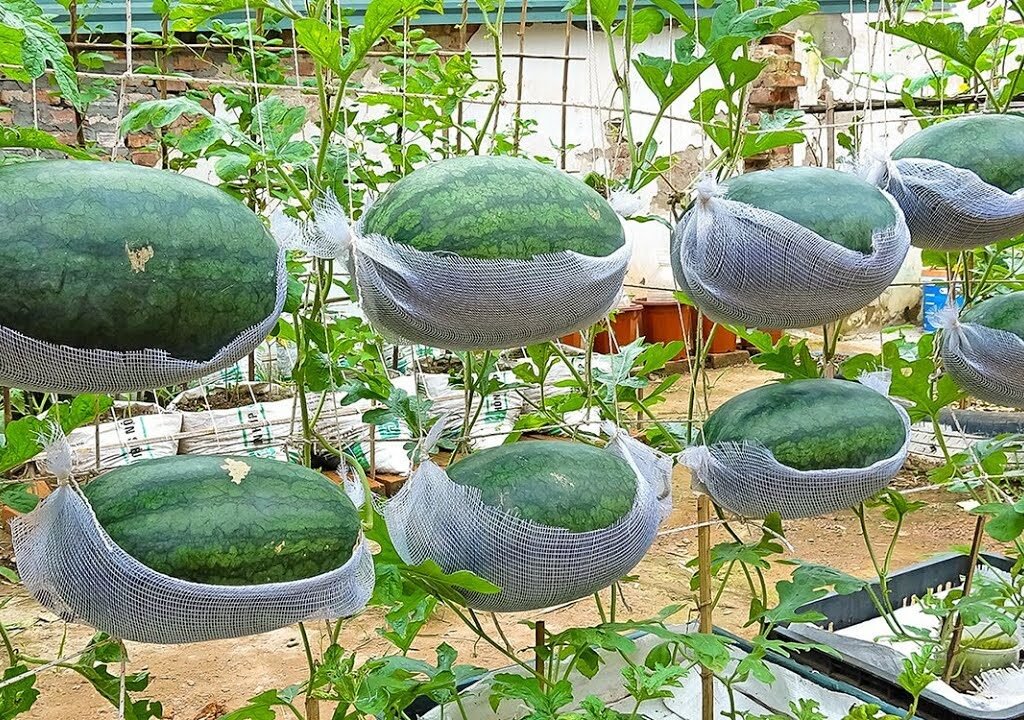
Watermelons are heavy feeders, especially when flowers and fruits start appearing.
Organic Fertilizers:
- Compost tea or diluted cow dung slurry every 10–15 days.
- Banana peel fertilizer or fish emulsion to provide potassium for fruit growth.
- Bone meal or eggshell powder to strengthen stems and prevent blossom-end rot.
Fertilizing correctly ensures your fruits grow plump, juicy, and sweet.
Step 8: Flowering and Pollination
Watermelons produce male and female flowers. Male flowers appear first, followed by female flowers that develop into fruits.
Pollination Tips:
- Let bees and other pollinators do the job naturally.
- If growing on a balcony with fewer insects, hand pollinate using a male flower to transfer pollen to the female flower.
- Pollination improves fruit set and ensures more watermelons per plant.
Step 9: Supporting Fruits in the Hammock
Once the female flowers start producing small fruits, place them carefully into the hammock sling.
Tips:
- Ensure the hammock cradles the fruit gently, avoiding pressure on the stem.
- Check regularly to adjust the sling as the fruit grows larger.
- Some watermelons can reach 5–10 kg, so the sling and support must be sturdy.
This method prevents fruit breakage, uneven ripening, and pest attacks.
Step 10: Pest and Disease Management
Hanging watermelons reduce soil-borne diseases, but some pests can still affect the plant:
| Problem | Solution |
|---|---|
| Aphids | Spray neem oil weekly |
| Fruit flies | Cover young fruits with breathable cloth |
| Powdery mildew | Apply baking soda solution on leaves |
| Stem or leaf rot | Ensure proper drainage and airflow |
Regular inspection and early intervention are key to a healthy harvest.
Step 11: Harvesting Sweet, Big Watermelons
Watermelons are usually ready to harvest in 70–90 days from planting.
Signs of Ripeness:
- The fruit’s underside turns creamy yellow.
- The tendril near the fruit dries up.
- The fruit has a hollow sound when tapped.
Cut the fruit with a sharp knife, leaving a small portion of the stem. Enjoy the satisfaction of harvesting large, sweet watermelons from a small space.
Step 12: Tips for Maximum Success
- Start with 2–3 watermelons per plant to avoid overloading the vine.
- Rotate hammocks and adjust support as fruits grow.
- Keep vines trimmed to focus energy on fruit production.
- Mulch and feed regularly to maintain growth.
Following these tips ensures your hanging watermelon garden produces more fruits, bigger in size, and sweeter than store-bought varieties.
Conclusion: Transform Your Terrace into a Watermelon Paradise
The hanging hammock method makes watermelon gardening accessible for beginners and urban gardeners. With minimal space, a strong support system, and proper care, you can enjoy a bountiful harvest of large, sweet watermelons right at home.
No garden? No problem! Even a balcony or terrace can become a mini watermelon farm with this innovative method. Start today, and discover the joy of growing your own juicy, organic watermelons without the hassle of traditional gardening.
From planting the seed to harvesting the sweet fruits, this technique turns watermelon gardening into a rewarding, manageable, and fun experience.
